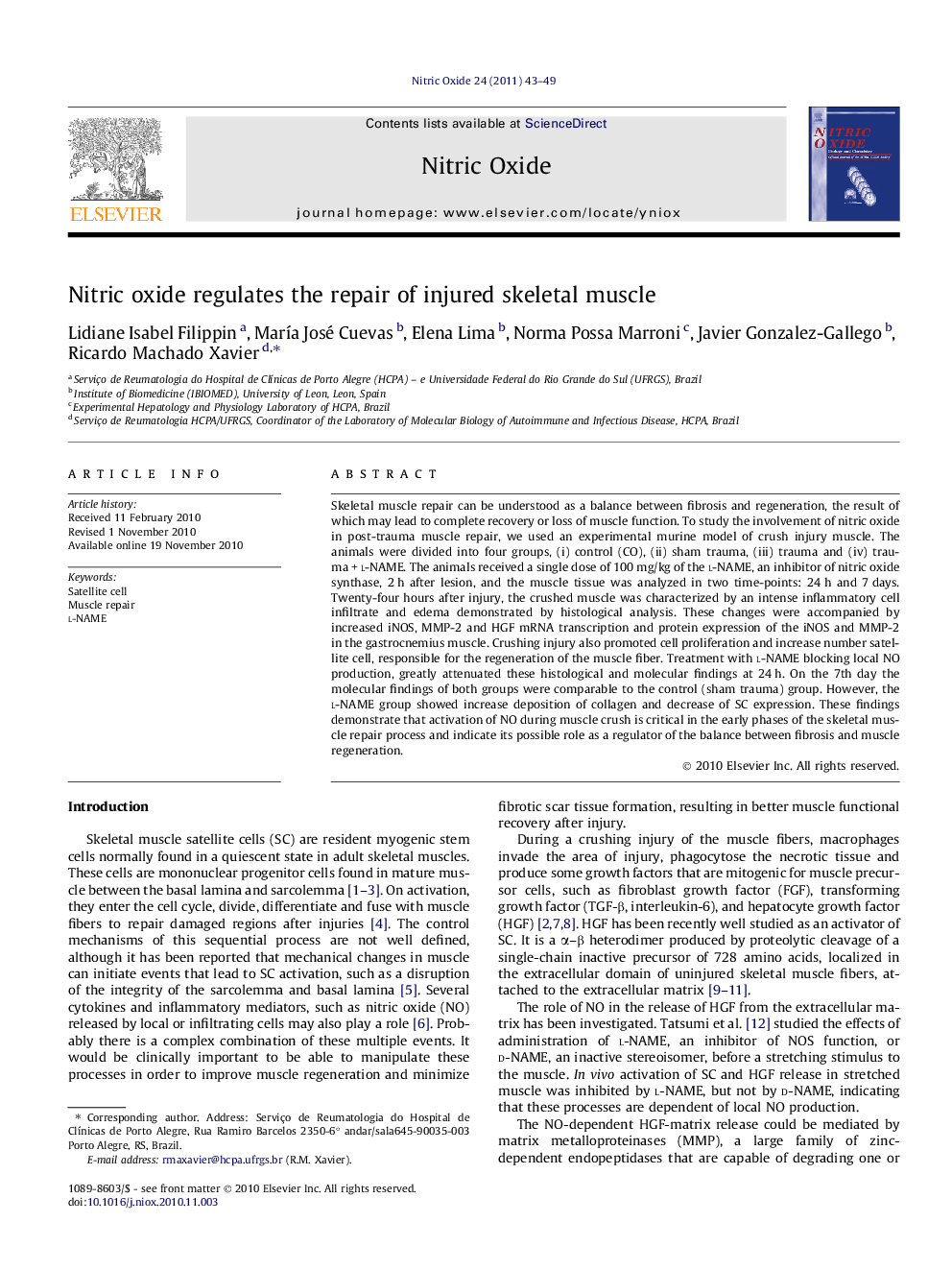| Article ID | Journal | Published Year | Pages | File Type |
|---|---|---|---|---|
| 10835205 | Nitric Oxide | 2011 | 7 Pages |
Abstract
Skeletal muscle repair can be understood as a balance between fibrosis and regeneration, the result of which may lead to complete recovery or loss of muscle function. To study the involvement of nitric oxide in post-trauma muscle repair, we used an experimental murine model of crush injury muscle. The animals were divided into four groups, (i) control (CO), (ii) sham trauma, (iii) trauma and (iv) trauma + l-NAME. The animals received a single dose of 100 mg/kg of the l-NAME, an inhibitor of nitric oxide synthase, 2 h after lesion, and the muscle tissue was analyzed in two time-points: 24 h and 7 days. Twenty-four hours after injury, the crushed muscle was characterized by an intense inflammatory cell infiltrate and edema demonstrated by histological analysis. These changes were accompanied by increased iNOS, MMP-2 and HGF mRNA transcription and protein expression of the iNOS and MMP-2 in the gastrocnemius muscle. Crushing injury also promoted cell proliferation and increase number satellite cell, responsible for the regeneration of the muscle fiber. Treatment with l-NAME blocking local NO production, greatly attenuated these histological and molecular findings at 24 h. On the 7th day the molecular findings of both groups were comparable to the control (sham trauma) group. However, the l-NAME group showed increase deposition of collagen and decrease of SC expression. These findings demonstrate that activation of NO during muscle crush is critical in the early phases of the skeletal muscle repair process and indicate its possible role as a regulator of the balance between fibrosis and muscle regeneration.
Keywords
Related Topics
Life Sciences
Biochemistry, Genetics and Molecular Biology
Biochemistry
Authors
Lidiane Isabel Filippin, MarÃa José Cuevas, Elena Lima, Norma Possa Marroni, Javier Gonzalez-Gallego, Ricardo Machado Xavier,
